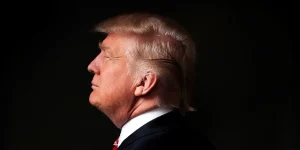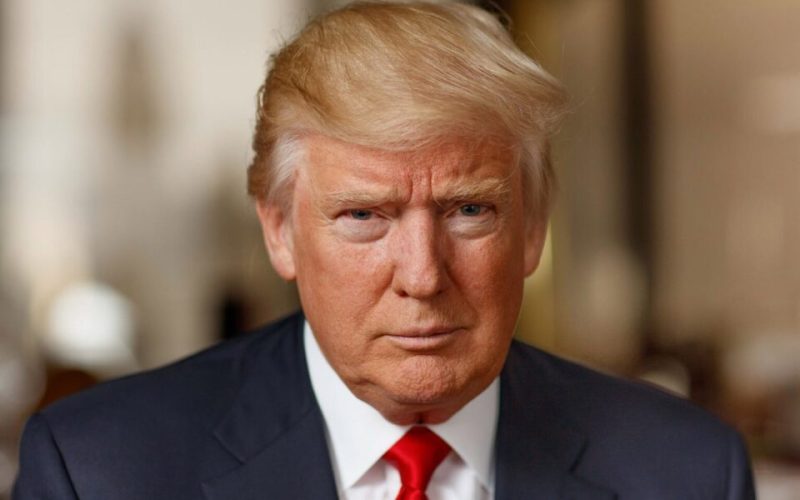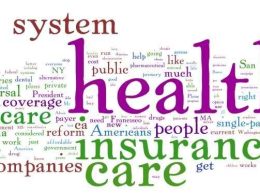Donald J. Trump’s tenure as the 45th President of the United States was marked by a series of significant economic policies and actions that have had both short-term and long-term effects on the American and global economy. This article examines the economic consequences of Mr. Trump’s presidency, focusing on key areas such as tax reforms, trade policies, deregulation, and the response to the COVID-19 pandemic.
Tax Reforms

The Tax Cuts and Jobs Act (TCJA)
One of the most notable economic policies implemented during Trump’s presidency was the Tax Cuts and Jobs Act (TCJA) of 2017. This legislation significantly reduced the corporate tax rate from 35% to 21%, aimed at spurring economic growth by incentivizing business investments.
Impact on Businesses and Investments:
- The reduction in the corporate tax rate was intended to increase the profitability of businesses, leading to higher investment in capital and labor.
- In the short term, many corporations used the tax savings for stock buybacks, dividends, and debt repayment rather than significant new investments.
- Over the long term, the effect on economic growth has been mixed, with some arguing that the benefits were outweighed by the increase in the federal deficit.
Trade Policies
Tariffs and Trade Wars
Trump’s trade policies, particularly his approach to China, marked a significant shift from previous administrations. The imposition of tariffs on Chinese goods and the subsequent trade war had a profound impact on global trade dynamics.
Impact on Trade and Economy:
- Tariffs led to increased costs for American businesses that rely on Chinese imports, resulting in higher prices for consumers.
- Some sectors, such as agriculture, faced significant challenges due to retaliatory tariffs imposed by China on American goods.
- While the aim was to protect American jobs and industries, the overall impact on the economy was mixed, with some industries benefiting and others suffering.
Deregulation
Rolling Back Regulations
The Trump administration prioritized deregulation, rolling back numerous regulations across various sectors, including environmental, financial, and labor regulations.
Impact on Businesses and Environment:
- Deregulation efforts were praised by many in the business community, who argued that reducing regulatory burdens would increase efficiency and economic growth.
- Critics, however, contended that some rollbacks, particularly in environmental regulations, could have long-term negative consequences for public health and the environment.
Response to COVID-19 Pandemic
Economic Stimulus and Relief Measures
The COVID-19 pandemic presented an unprecedented challenge to the global economy, and the Trump administration’s response involved significant economic stimulus and relief measures.
Impact on Economy and Public Health:
- The administration implemented several relief packages, including direct payments to individuals, enhanced unemployment benefits, and support for businesses through the Paycheck Protection Program (PPP).
- While these measures provided short-term relief, the handling of the pandemic, including mixed messaging and delayed responses, was criticized for exacerbating the public health crisis and prolonging economic uncertainty.
Long-Term Consequences
Federal Deficit and Debt
One of the most significant long-term economic consequences of Trump’s presidency is the increase in the federal deficit and national debt.
Impact on Fiscal Policy:
- The combination of tax cuts, increased military spending, and COVID-19 relief measures significantly expanded the federal deficit.
- This has raised concerns about the long-term sustainability of fiscal policy and the potential need for future tax increases or spending cuts.
Labor Market and Employment
Trump’s economic policies also had notable effects on the labor market and employment rates.
Impact on Jobs and Wages:
- The pre-pandemic period saw low unemployment rates and steady job growth, which many attributed to the economic policies of the administration.
- However, the pandemic resulted in a significant loss of jobs, with recovery efforts continuing to face challenges.
Analysis Table
| Policy Area | Action Taken | Short-Term Impact | Long-Term Impact |
|---|---|---|---|
| Tax Reforms | Tax Cuts and Jobs Act (TCJA) | Increased corporate profitability, stock buybacks | Mixed impact on economic growth, increased federal deficit |
| Trade Policies | Imposition of tariffs on Chinese goods | Higher costs for businesses, consumer price increases | Mixed industry impact, strained US-China relations |
| Deregulation | Rolling back environmental and financial regs | Increased business efficiency | Potential long-term environmental and public health risks |
| COVID-19 Response | Economic stimulus and relief measures | Short-term relief for individuals and businesses | Criticized handling of public health, prolonged economic uncertainty |
| Federal Deficit and Debt | Increased spending, tax cuts | Short-term economic boost | Increased national debt, future fiscal challenges |
| Labor Market and Employment | Economic policies pre-pandemic | Low unemployment, job growth | Significant job losses due to pandemic, ongoing recovery |
Comparative Table
| Economic Aspect | Pre-Trump Era | Trump Era | Post-Trump Projections |
|---|---|---|---|
| Corporate Tax Rate | 35% | 21% | Potential future adjustments |
| Trade Policies | Multilateral agreements focus | Bilateral trade deals, tariffs on China | Potential recalibration of trade policies |
| Deregulation | Gradual regulatory adjustments | Significant rollbacks in various sectors | Possible reinstatement of some regulations |
| Federal Deficit | Steady but controlled | Significant increase due to policies | Ongoing concerns about fiscal sustainability |
| Employment Rates | Gradual improvement post-2008 | Low unemployment pre-pandemic, job losses during pandemic | Recovery with potential structural changes |
| Economic Growth | Moderate and steady | Initial boost, mixed long-term outcomes | Dependent on future policies and global conditions |
Conclusion
The economic consequences of Mr. Trump’s presidency are complex and multifaceted, with both positive and negative outcomes. While certain policies such as tax cuts and deregulation spurred short-term economic activity, others, like trade wars and pandemic responses, led to significant challenges. The long-term impacts, particularly concerning the federal deficit and environmental regulations, will continue to influence economic policy and growth in the years to come. Understanding these consequences is crucial for shaping future economic strategies and addressing the ongoing challenges in the post-Trump era.










